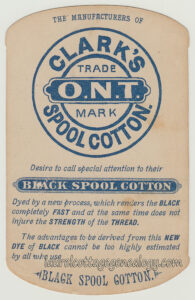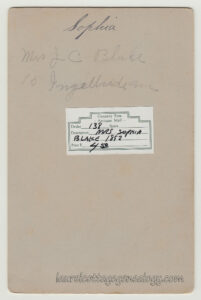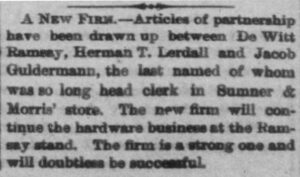Divided back postcard. Postmarked November 3, 1912 from Schoolcraft, Michigan.
Price: $15.00
The very cute, “Bunnie,” squinting a little from the sun, posing in front of a porch trellis that is covered in two different leafy vines. (One is heart-shaped, the other, something else.) She’s on her way somewhere (or just back from) – we’re playing detective here – noted because of the small purse she holds in her left hand. Her outfit of skirt and blouse has a short scalloped-edge, “curtained” layer: This piece is called a peplum, and was created (in various styles) to add a little flair to the hips, thereby accentuating the waist – in other words, to bring back just a little of that “hourglass” look that had been previously so popular in women’s fashion.
From TextileGlossary.com:
“The peplum can be created using various techniques, such as pleating, gathering, or ruffling fabric. It can be attached to the bodice of a garment, creating a seamless transition from the waistline, or it can be a separate piece that is sown onto the waist. The length of the peplum can vary, ranging from a subtle and short flounce to a dramatic and floor-length extension.”
Peplum examples in some of the images below, from a Google image search:
Back to our postcard:
Addressed to: “Miss Vivian Mack, Dexter Michigan.”
Well, if only life were always that easy! Dexter, Michigan (northwest of Ann Arbor, in Washtenaw County) must have been a pretty small town in 1912 – no street or rural route was needed to get this card to its intended. (Indeed, the census taker for Dexter in 1910 had enumerated 542 persons.) Established as a village in 1830, Dexter was not incorporated as a city until 2014. As of 2020 the population was about 4500. Schoolcraft, by the way, is on the other side of the state, south of Kalamazoo.
The sender wrote: “Dearest Mimmie :- Don’t think that I have forgotten you or that your birthday comes Sunday. I hope you will have a lovely Birthday. What did you do Halloween? Merle had a party. Everybody in S. is pretty well but Papa, who has a broken leg. Hope I will hear from you soon – Bunnie.”
Note that Bunnie has embellished three of the capital letters in the address – a nice birthday touch.
Vivian Mack
Vivian Irene Mack was born in Rodney, Ontario, Canada November 3, 1896. Investigating further, we were so sorry to learn that she had died in January of 1920, at age 23 (pneumonia with heart complications). Vivian, (and we’re sorry we don’t have a picture of her) was the daughter of the Rev. Henry Mack and Annie Sine. She had married Robert J. Ernst on April 12, 1919.
Sources: Dexter, Michigan. n.d. https://en.wikipedia.org/wiki/Dexter,_Michigan (accessed February 11, 2024).
Year: 1900; Census Place: Hadley, Lapeer, Michigan; Roll: 724; Page: 7; Enumeration District: 0037. (Ancestry.com).
Year: 1910; Census Place: Dexter, Washtenaw, Michigan; Roll: T624_677; Pages 1A – 17B; Enumeration District: 0139; FHL microfilm: 1374690. (Ancestry.com).
Michigan Department of Community Health, Division of Vital Records and Health Statistics; Lansing, MI, USA; Michigan, Marriage Records, 1867-1952; Film: 146; Film Description: 1919 Ontonagon-1919 Wayne. (Ancestry.com).
Find a Grave, database and images (https://www.findagrave.com/memorial/70977302/vivian_irene-ernst: accessed February 11, 2024), memorial page for Vivian Irene Mack Ernst (–), Find a Grave Memorial ID 70977302, citing Forest Lawn Cemetery, Dexter, Washtenaw County, Michigan, USA; Maintained by Anonymous (contributor 47412861).
“What is ‘Peplum’ – Definition & Explanation.” January 19, 2023, https://www.textileglossary.com/terms/peplum.html. (Accessed February 13, 2024.)
Google.com search, “images of peplums in 1910s.” (Accessed February 13, 2024.)



























